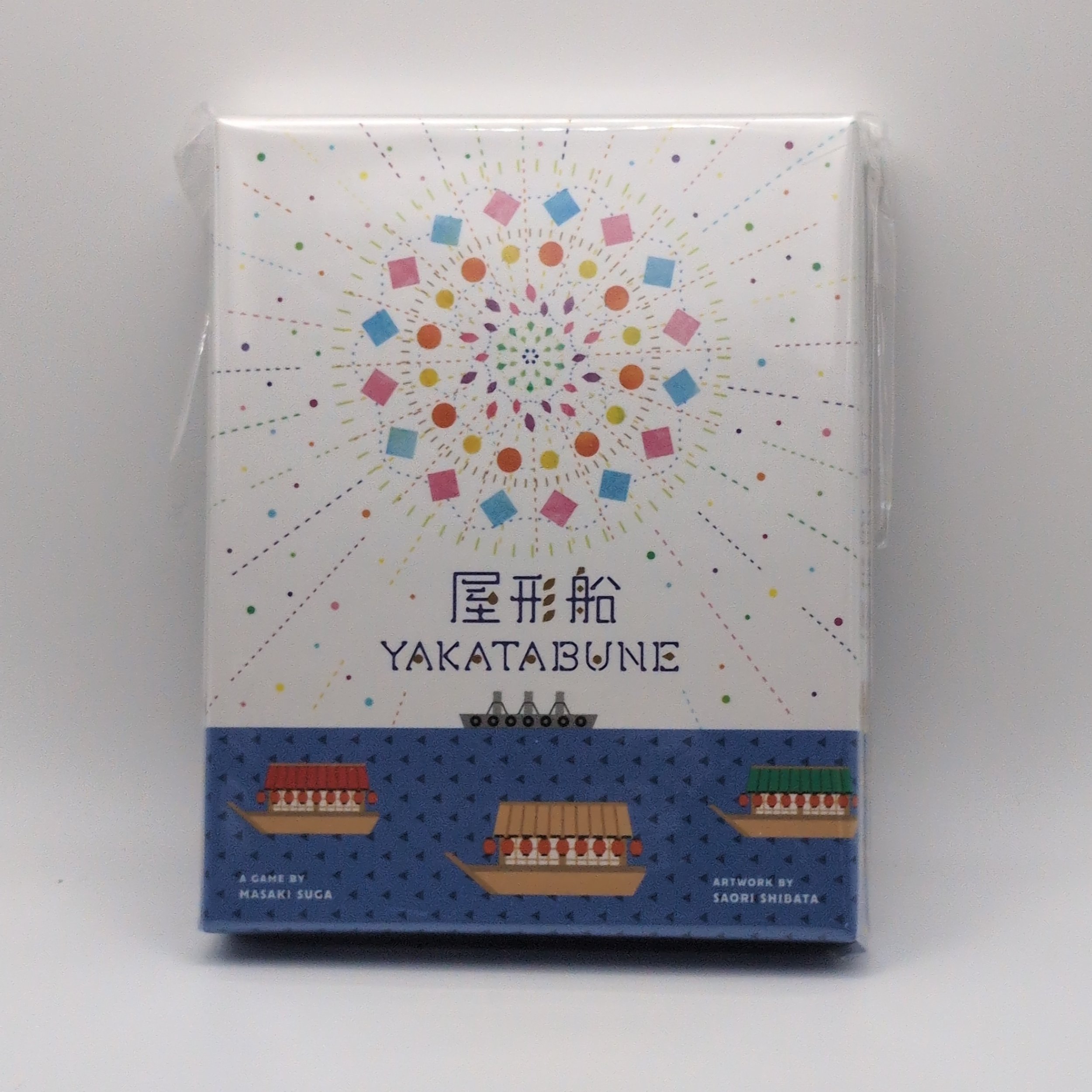 Image 1 of 1
Image 1 of 1


Yakatabune (IMPORT)
This game is in Japanese but is language-independent (no Japanese text on cards), a pdf copy of the English rules will be provided with the game if they are not included within the box.
In Yakatabune, a.k.a. 屋形船, an area-majority puzzle game, you and another player are rival pyrotechnicians who are competing to prove your mastery in the summer's most anticipated fireworks festival. To do so, you need to place fireworks cards on your side of the river to complete your program cards while attempting to earn the applause of each "yakatabune" — that is, "houseboat" — card by having a majority in that column.
In more detail, to set up lay out the seven yakatabune cards in a row; place three starter fireworks (value 1) on the starting player's side of the board and four starters on the other side in alternating columns. You start with two cards in hand from your deck of 13 cards, and you choose two program cards from the three you're dealt.
On a turn, play a fireworks card on your side of the board in the closest empty space next to a yakatabune on your choice. Your opponent may then use the effect of that fireworks card — swapping two cards, shifting a card to an adjacent space, or flipping a card — on either their cards, your cards, or the yakatabune, depending on the icons depicted on the associated yakatabune. Alternatively, your opponent may decline to use the effect and instead draw a program card.
After you play a card, if you have a program card in hand that matches the pattern of fireworks on your side of the board, you can play that card, take the bonus actions on it to shift one or more of your cards, then play another program card if you now have that pattern.
Next, if the number of cards surrounding a yakatabune equals or exceeds that boat's limit, you sum the fireworks on each side to see who has captured the awe of the viewers on that boat. Mark this boat with an applause token, then turn all of the winning player's fireworks face down. (Face-down cards can still be used to complete many pattern cards.) End your turn by drawing a fireworks card from your deck.
When the game ends after five applause tokens have been placed or the fireworks or program cards run out, players tally their collected awe to see who wins.
This game is in Japanese but is language-independent (no Japanese text on cards), a pdf copy of the English rules will be provided with the game if they are not included within the box.
In Yakatabune, a.k.a. 屋形船, an area-majority puzzle game, you and another player are rival pyrotechnicians who are competing to prove your mastery in the summer's most anticipated fireworks festival. To do so, you need to place fireworks cards on your side of the river to complete your program cards while attempting to earn the applause of each "yakatabune" — that is, "houseboat" — card by having a majority in that column.
In more detail, to set up lay out the seven yakatabune cards in a row; place three starter fireworks (value 1) on the starting player's side of the board and four starters on the other side in alternating columns. You start with two cards in hand from your deck of 13 cards, and you choose two program cards from the three you're dealt.
On a turn, play a fireworks card on your side of the board in the closest empty space next to a yakatabune on your choice. Your opponent may then use the effect of that fireworks card — swapping two cards, shifting a card to an adjacent space, or flipping a card — on either their cards, your cards, or the yakatabune, depending on the icons depicted on the associated yakatabune. Alternatively, your opponent may decline to use the effect and instead draw a program card.
After you play a card, if you have a program card in hand that matches the pattern of fireworks on your side of the board, you can play that card, take the bonus actions on it to shift one or more of your cards, then play another program card if you now have that pattern.
Next, if the number of cards surrounding a yakatabune equals or exceeds that boat's limit, you sum the fireworks on each side to see who has captured the awe of the viewers on that boat. Mark this boat with an applause token, then turn all of the winning player's fireworks face down. (Face-down cards can still be used to complete many pattern cards.) End your turn by drawing a fireworks card from your deck.
When the game ends after five applause tokens have been placed or the fireworks or program cards run out, players tally their collected awe to see who wins.
